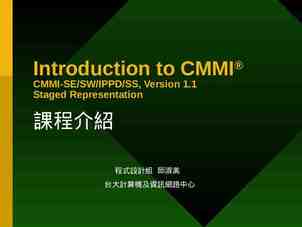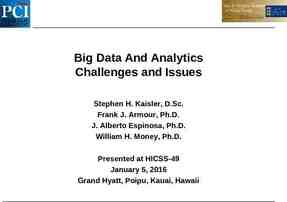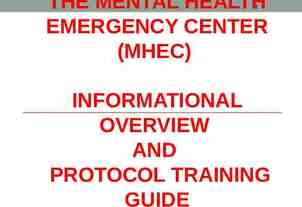Chapter 3 Digital Marketing: Online, Social, and Mobile McGraw-Hill
34 Slides1.36 MB

Chapter 3 Digital Marketing: Online, Social, and Mobile McGraw-Hill Education. All rights reserved. Authorized only for instructor use in the classroom. No reproduction or further distribution permitted without the prior written consent of McGraw-Hill Education.

Learning Objectives Learning Objective 3.1 Describe the 4E framework of digital marketing. Learning Objective 3.2 Examine the seven critical elements of online marketing. Learning Objective 3.3 Understand the drivers of social media engagement. Learning Objective 3.4 Understand various motivations for using mobile applications. Learning Objective 3.5 Recognize and understand the components of a digital marketing strategy. 2 McGraw-Hill Education

L’Oreal 3 McGraw-Hill Education Tharanat Sardsn/Shutterstock

Exhibit 3.1: The 4E Framework for Digital Marketing 4 McGraw-Hill Education Throughout this video, an animated caveman describes various types of social

Excite the Customer Offer must be relevant to its targeted customer. Relevancy can be achieved by providing personalized offers. 5 McGraw-Hill Education Genevieve Ross/AP Images

Educate the Customer Golden opportunity: Educate about the product’s value proposition and communicate offered benefits. 6 McGraw-Hill Education Source: Worldwide Breast Cancer

Experience the Product or Service Provide vivid information about a firm’s goods and services. Simulate real experiences. 7 McGraw-Hill Education Steve Jennings/Getty Images

Engage the Customer Action, loyalty, and commitment. Positively engaged consumers lead to more profitability. Engagement can also backfire. 8 McGraw-Hill Education

PROGRESS CHECK (1 of 4) 1. What are the 4 Es? 2. What social media elements work best for each of the 4 Es? 9 McGraw-Hill Education

The 7C Online Marketing Framework 10 McGraw-Hill Education

1. Core Goals The basis of any marketing strategy is its goals. Determine specific goals. Align the goals with the target market and align the 7Cs with the goals. 11 McGraw-Hill Education

2. Context Elements Design Navigation Must be in alignment with the target market 12 McGraw-Hill Education

3. Content Monitor to ensure relevancy. Devise appropriate keywords to improve organic search. Implement SEM and paid search. 13 McGraw-Hill Education

4. Community Allow customers to interact. Use corporate and professional blogs. Engage in Crowdsourcing. 14 McGraw-Hill Education

5. Communication Clear, helpful, meaningful content enables effective communication. Enables interacting with, engaging, and educating site visitors. Provide a mechanism for customers to communicate with the firm. McGraw-Hill Education 15

6. Commerce Desktop usage is greater, and conversion rates higher, for online purchases. The most loyal customers use multiple channels. Customers want a range of online purchase options. 16 McGraw-Hill Education

7. Connection Engage customers and provide a call to action. Allow customers to interact with the firm continuously. Enable positive engagement. 17 McGraw-Hill Education

PROGRESS CHECK (2 of 4) 1. Describe the components of the 7C online marketing framework. 2. Differentiate between organic and paid search. 18 McGraw-Hill Education

Exhibit 3.3: The Wheel of Social Media Engagement 19 McGraw-Hill Education

The Information Effect Outcome in which relevant information is spread by firms or individuals to other members of the social network. 20 McGraw-Hill Education

The Connected Effect Outcome that satisfies humans’ innate need to connect with other people. 21 McGraw-Hill Education

The Network Effect Outcome in which every post is spread instantaneously across social media. 22 McGraw-Hill Education

The Dynamic Effect Information is exchanged to network participants through back-and-forth communications. Examines how people flow in and out of networked communities as their interests change. 23 McGraw-Hill Education Ignacio Izquierdo/Rex Features/AP Photo

The Timeliness Effect Firms must engage with the customer at the right place and time. 24 McGraw-Hill Education SeongJoon Cho/Bloomberg/Getty Images

PROGRESS CHECK (3 of 4) 1. What are the five drivers of social media engagement described in the Wheel of Social Media Engagement? 25 McGraw-Hill Education

Going Mobile and Social Exhibit 3.4: Seven Primary Motivations for Mobile App Usage Need for “Me Time” Need to Socialize Need to Shop (showrooming) Need to Accomplish Need to Prepare Need to Discover Need to Self-Express McGraw-Hill Education Jump to Appendix 1 long image description Source: “Vision Statement: How People Really Use Mobile,” Harvard Business Review, January/February 2013, http://www.hbr.org 26

App Pricing Models Ad-supported apps Freemium apps Paid apps in-app purchases 27 McGraw-Hill Education

PROGRESS CHECK (4 of 4) 1. What are the seven types of customer motivations for using mobile apps? 2. What are the four options for pricing mobile apps? 3. What are some of the most popular types of mobile applications? 28 McGraw-Hill Education

How Do Firms Engage Their Customers? Exhibit 3.5: Social Media Engagement Process 29 McGraw-Hill Education

Listen Listening helps determine digital marketing objectives and strategies. Sentiment analysis: Attitudes Preferences 30 McGraw-Hill Education Source: NFL Properties LLC

Analyze Using Marketing Analytics Hits Page views Bounce rate Click paths Conversion rate Keyword analysis 31 McGraw-Hill Education Source: salesforce.com

Do Develop and implement campaigns using social media. Effective implementation based on social and mobile media activity. 32 McGraw-Hill Education Genevieve Ross/AP Images

Exhibit 3.6 How to Do a Digital Marketing Campaign 1. Identify strategy and goals 2. Identify the target audience 3. Develop the budget 4. Develop the campaign 5. Monitor & change 33 McGraw-Hill Education

Marketing Chapter 3 The End The End






